How to avoid forehead wrinkles?
Board-certified dermatologist, Dr. Alpana Mohta talks about the best creams, procedures and lifestyle changes to avoid and treat forehead wrinkles.
Table of Content:
How to get rid of forehead wrinkles? | Morning skin care routine | Evening skin care routine | What is the best cream? | How to get a prescription? | Anti-aging procedures | About forehead wrinkles: When do they start and how to prevent them
Our commitment to producing high-quality content:
The information presented in this article is based on scientific research and the professional advice of our Content Medical Reviewers, who are experts in the field of Dermatology. How we write our content →
Forehead wrinkles often refer to the lines or creases that emerge on the forehead’s skin as a common aspect of the aging process.
These wrinkles usually present as horizontal lines stretching across the forehead and can range from subtle, barely visible fine lines and crinkles to more pronounced creases.
How to get rid of wrinkles on the forehead?
We consulted Dr. Alpana Mohta, a board-certified dermatologist, for the most effective strategies to prevent and eliminate forehead lines. She recommended three key approaches: adopting an anti-aging skincare regimen with prescription-grade creams, exploring suitable cosmetic treatments at a dermatology clinic, and maintaining a healthy lifestyle.
Below you can see a series of steps you can take to get rid of forehead wrinkles.
- Follow and anti-aging skin care routine with prescription-strength ingredients
- Botox
- Dermal fillers forehead
- Fractional laser treatment
- Chemical peels
- High-intensity focused ultrasound (HIFU)
- Radiofrequency (RF) treatment (Thermage)
- Micro needling radiofrequency ablation
- Platelet-rich plasma (PRP) therapy
- Thread lift
How to prevent forehead wrinkles?
Dr. Mohta says that Incorporating a skin care routine tailored for wrinkle reduction can significantly prevent and diminish the appearance of forehead lines, and preserve a youthful glow. It is important to always perform a patch test before trying out new products and seek advice from your dermatologist.

Morning skincare routine for reducing forehead wrinkles
Use a gentle cleanser
Begin your day with a gentle cleanser to wash away overnight sweat and impurities, ensuring your skin retains its natural moisture.
Apply Antioxidant Serum
Utilize the power of potent antioxidants like Vitamin C or Ferulic acid in the morning to combat forehead wrinkles. Their potent antioxidant properties protect against damage from environmental aggressors like sun exposure and pollution, playing a crucial role in preventing premature aging. Vitamin C also serves as a protective barrier, neutralizing harmful free radicals and lessening oxidative stress1.
Moisturize with a niacinamide cream
Following Vitamin C, Dr. Mohta recommends applying a niacinamide-infused moisturizer. This combination enhances your skin’s defense against oxidative stress, boosts collagen production, and improves skin tone uniformity. Antioxidants like vitamin C provide environmental protection and brightens your complexion, while niacinamide fortifies your skin’s barrier, increases moisture, and diminishes redness.
Apply sunscreen
Protect your skin with a broad-spectrum SPF 50 sunscreen having a PA++++ rating to prevent UV-induced damage, a major factor in premature skin aging.
Evening skincare routine for reducing forehead wrinkles
Use a gentle cleanser
Use a gentle cleanser to eliminate the day’s buildup of dirt, makeup, and impurities while preserving your skin’s natural moisture.
Use an exfoliating acid
Apply alpha hydroxy acids (AHAs) like glycolic or lactic acid on your forehead 1-2 times weekly at night for their rejuvenating properties. These acids facilitate skin renewal and revitalization during sleep, minimizing exposure to sun sensitivity. Following up with a nourishing moisturizer is essential to restore the skin’s barrier after exfoliation.
Use a prescription retinoid
Integrate a prescription strength retinoid into your nighttime routine on alternate days from exfoliating acids. Retinoids, like tretinoin or Altreno, are effective in boosting collagen production, smoothing out fine lines, and enhancing skin texture by promoting cell turnover and the removal of damaged skin cells. Nighttime application ensures efficacy without UV interference, which can increase skin sensitivity.
You can use AHAs and retinoids on alternate nights but make sure to not use them together at the same time.
Moisturize with a niacinamide or hyaluronic acid cream/serum
Following retinoid application, use a moisturizer containing hyaluronic acid or niacinamide. Tretinoin’s potent anti-aging benefits may cause dryness or irritation; hyaluronic acid aids in hydration, and niacinamide fortifies the skin barrier and calms irritation, supporting collagen production. This synergistic approach amplifies anti-aging effects while mitigating side effects for smoother, younger-looking skin.
What is the best cream for forehead wrinkles?
When it comes to forehead wrinkles, prevention is as important as treatment. That is why Dr. Mohta recommends using Vitamin C followed by sunscreen with SPF 50 every morning and applying a prescription strength retinoid and a moisturizer with Niacinamide and/or hyaluronic acid during the night.
Can you use tretinoin for forehead wrinkles?
Yes, absolutely you can definitely use tretinoin for forehead wrinkles and anti-aging. In fact, tretinoin is the most widely prescribed and studied retinoid for the treatment of wrinkles, photoaging (sun damage) and hyperpigmentation. However, when you use tretinoin you always have to pair it up with sunscreen (as it makes skin more sensitive to the sun) and a good moisturizer to avoid skin irritation.
How to get a prescription for forehead wrinkles?
To get an anti-aging prescription for forehead wrinkles, you can have a photo visit with an online dermatologist for around $59. All you need to do is take a few photos of your face, answer a short questionnaire, and mention the medication you’d like to try. If you’re looking for an affordable alternative, ask your dermatologist about a compounded formulation available through an online compounding pharmacy.
What is best for forehead lines?
What is best for forehead lines greatly depends on your age, treatment preferences and budget. If you are in your 20’s, using sunscreen and antioxidant serums may be enough. But if you are in your 40’s or 50’s you may want to combine prescription-strength ingredients with some cosmetic procedures at a local dermatology clinic.
Can I use a derma roller for forehead wrinkles?
Yes, Dr. Mohta says that you can also use a derma roller once per week to reduce forehead wrinkles as this process causes micro-injuries to the skin stimulating the production of collagen. You can read more about our dermatologist guide on how to use a derma roller.
Forehead wrinkle treatment: What procedure is best for deep forehead wrinkles?
The most effective procedure for deep forehead wrinkles may vary based on individual skin conditions and preferences, however, fractional laser treatment, botox and dermal fillers are highly effective. The choice between botox, dermal fillers, or fractional laser treatment depends on the nature of the wrinkles and the desired outcome.
Best procedures for deep forehead wrinkles
If you need additional help getting rid of deep forehead wrinkles, you can also find a dermatologist in your city to find the best cosmetic procedure at a local dermatology clinic. There are a few alternative methods to tighten forehead skin without resorting to surgery.
Botox for deep forehead wrinkles
Botox works best for dynamic wrinkles, which are lines that appear due to muscle movement (like frowning, squinting, or raising the eyebrows). It temporarily paralyzes the hyperactive frontalis muscle that causes these wrinkles, smoothing out the skin. Botox is particularly effective for the horizontal lines on the forehead and the glabellar lines between the eyebrows. The use of Botox not only helps in diminishing the visibility of existing lines but also aids in preventing the formation of deeper wrinkles with ongoing treatment2. Being a non-surgical option, Botox offers the advantage of minimal recovery time. The effects of botox are temporary, typically lasting from three to six months.
Dermal fillers forehead
Dermal fillers are more suited for static wrinkles, which are visible even when the face is at rest. Fillers work by “filling in” wrinkles and folds, adding volume beneath the skin’s surface. They are especially effective for deep wrinkles that have lost volume over time, including some types of deep forehead lines. Fillers can provide immediate results, making them a popular choice for individuals looking for quick improvements. These injections are commonly composed of substances like hyaluronic acid, a naturally occurring component in the skin known for its ability to retain moisture and add volume. Upon being injected into targeted forehead areas, dermal fillers not only plump up the skin to visibly diminish the depth of wrinkles but also may encourage the body’s own collagen production, enhancing skin texture and firmness over time3. However, the effects are not permanent, with the duration of visible benefits ranging from six months to more than a year depending on the type of filler used.
Fractional laser treatment for deep forehead wrinkles
Fractional laser therapy effectively reduces forehead wrinkles by generating targeted micro-damage to the skin. The most commonly used fractional laser systems are CO2 laser and Er:YAG laser. This technique prompts the skin to produce collagen and elastin, essential proteins for maintaining skin elasticity and firmness. The healing process rejuvenates the skin, creating a smoother texture, diminishing wrinkles, and enhancing overall youthfulness. Differing from conventional laser resurfacing, fractional laser only affects a fraction of the skin, leading to quicker recovery times and minimal downtime. To attain optimal outcomes, several treatments might be necessary, contributing to sustained enhancements in skin condition and a visible decrease in wrinkles4.
Chemical peels for forehead wrinkles
Chemical peels help reduce acne scars and forehead wrinkles by applying a chemical solution to the skin, which causes the top layers to peel off. This process removes dead skin cells and stimulates the regeneration of new skin cells, leading to a smoother, more youthful skin surface. For forehead wrinkles it is recommended you do medium to deep peels like glycolic acid, Jessner’s peel, and trichloroacetic acid peel because they penetrate further into the dermis and are the most effective against pronounced wrinkles and deep skin imperfections, offering dramatic rejuvenation results.
High-intensity focused ultrasound (HIFU)
High-intensity focused ultrasound (HIFU) proves beneficial in diminishing forehead wrinkles by directing exact ultrasound energy deep beneath the skin’s surface. This process creates targeted heat, which initiates the production and restructuring of collagen. As the level of collagen rises, the skin gains smoothness and firmness, leading to a noticeable decrease in the appearance of forehead wrinkles and laxity over time.
HIFU offers short and long-term benefits, with visible improvements over time. It is a non-invasive and safe alternative to surgery, making it a popular choice for individuals seeking skin rejuvenation without a surgical procedure5.
Radiofrequency treatments
Radiofrequency therapy, commonly referred to as Thermage, offers a promising solution for minimizing forehead wrinkles by applying targeted heat to the deeper layers of the skin. This heat prompts the collagen fibers to contract immediately, leading to an initial skin tightening effect. Moreover, it activates the natural collagen production process, which enhances skin elasticity and diminishes wrinkles over time. RF therapy provides both immediate improvement and progressive benefits, typically necessitating multiple treatments for the best outcomes. As a non-invasive and safe procedure with little to no downtime, it presents an appealing option for those looking to refresh their forehead area and reduce wrinkles6.
Micro needling for forehead wrinkles
Micro needling Radiofrequency (MNRF) targets forehead wrinkles by merging the techniques of micro needling and radiofrequency energy, addressing skin laxity and wrinkles effectively. This dual approach involves using fine needles to induce controlled micro-injuries in the skin, which kickstarts the production of collagen and elastin. Concurrently, the application of radiofrequency energy warms the skin’s deeper layers, promoting further collagen regeneration. This synergistic effect tightens the skin, enhances its texture, and lessens the visibility of forehead wrinkles, yielding a revitalized and smoother appearance of the forehead7.
Consult a Board-Certified Dermatologist Now!
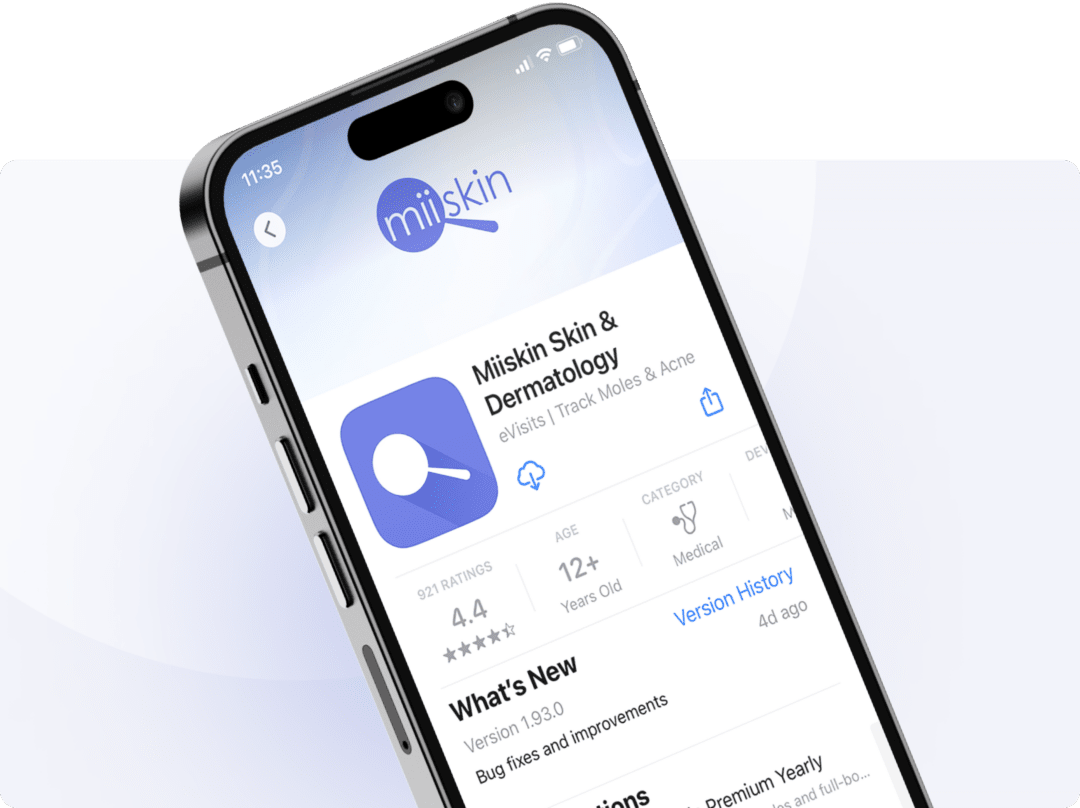
Download the Miiskin app to connect with independent, board-certified dermatologists who are licensed in your state. Answer a few questions, upload some photos and get a treatment plan in 1-2 days. Consultation price is $59 and medication renewals are only $39.
Online dermatology care is ideal for chronic dermatology conditions.
Platelet-rich plasma (PRP) therapy
PRP therapy helps in diminishing forehead wrinkles by harnessing the healing and rejuvenating properties of one’s own blood. In this procedure, a small amount of the patient’s blood is drawn and then processed in a centrifuge to separate the plasma enriched with platelets. This platelet-rich plasma is rich in growth factors that stimulate cell regeneration and collagen production when injected back into the skin. For forehead wrinkles, the PRP injections promote the skin’s natural healing process, leading to the renewal of skin cells and increased collagen and elastin levels. This results in a smoother, firmer skin texture, and a reduction in the depth and appearance of wrinkles. The therapy leverages the body’s own biological mechanisms to rejuvenate the skin, making it a natural, albeit gradual, way to achieve a more youthful and refreshed appearance without the use of synthetic materials or chemicals8.
Thread lift
A thread lift is a minimally invasive alternative to traditional facelifts for reducing forehead wrinkles by employing biodegradable threads made of materials like polydioxanone and polycaprolactone. These threads are inserted beneath the skin to offer an immediate lifting effect. These threads, designed with tiny barbs or cones, catch onto the skin’s underlayers, pulling it taut to smooth out wrinkles and provide a subtle lift. Beyond the immediate visual improvement, the insertion of threads prompts the body’s natural healing response, leading to increased collagen production around the areas where the threads are placed. This process enhances the skin’s elasticity and firmness over time, contributing to a more sustained reduction in the appearance of forehead lines. The advantages of a Thread Lift include a quicker recovery period and lower risk compared to more invasive surgical procedures, making it an appealing choice for those seeking a less drastic solution to moderate forehead wrinkles and skin laxity. The results, while not as long-lasting as surgical options, offer a meaningful improvement in skin texture and tightness, with the effects of the collagen stimulation extending beyond the lifespan of the threads themselves.
Can you fix deep forehead wrinkles?
Dr. Mohta says that you can definitely improve the appearance of deep forehead wrinkles, but in many cases, a combination of treatments may offer the best result. For instance, Botox can be used to address dynamic wrinkles, while fillers can target deeper, static lines, and fractional laser treatment is effective for overall skin rejuvenation, improving texture, and promoting collagen production, which can benefit all types of wrinkles over time. In addition to these procedures, adding a prescription retinoid as maintenance can help you achieve longer lasting results.
Can you get rid of forehead wrinkles without Botox?
Yes, you can get rid of forehead wrinkles without Botox by considering options like prescription retinoids, dermal fillers, micro needling, fractional laser treatment, chemical peels, high-intensity focused ultrasound, platelet-rich plasma (PRP) therapy or radiofrequency treatments.
What is the best treatment for forehead wrinkles without Botox or injectables?
If you want to treat forehead wrinkles without using Botox, injectables or any treatments without needles you may want to consider options like prescription retinoids, fractional laser treatment, chemical peels, high-intensity focused ultrasound or radiofrequency treatments.
Request tretinoin for neck wrinkles!
About forehead wrinkles
At what age do forehead wrinkles start?
Dr. Mohta says The onset of forehead wrinkles varies greatly among individuals, influenced by genetics, lifestyle, and environmental factors.
It’s uncommon for people in their early 20s to have permanent forehead wrinkles at this age, but repetitive facial expressions can begin to show temporary lines.
In early 30s is when many individuals start to notice the first signs of aging, including fine lines or the beginning stages of wrinkles, especially if they have had significant sun exposure or frequently engage in expressive facial movements.
In late 30s and 40s wrinkles tend to become more pronounced during this period, often deepening due to continued collagen loss and skin elasticity decrease.
In 50s and beyond forehead wrinkles can become more defined and accompanied by other signs of aging skin, such as sagging and deeper creases, with sun spots, reflecting cumulative sun damage, lifestyle choices, and genetic predispositions.
It’s important to note that the timeline for the appearance of forehead wrinkles can be influenced by preventive care, such as using sunscreen, maintaining a healthy skin care regimen, and avoiding smoking, which can significantly delay their onset and reduce their severity.
What causes forehead wrinkles?
Aging
Dr. Mohta As you get older, your skin loses elasticity and produces less collagen, making it more prone to wrinkles and lines. Collagen is a protein that provides structural support to the skin, helping it remain firm, elastic, and smooth. When collagen production declines with age this leads to the formation of wrinkles, including forehead lines9.
Facial expressions
Frequent movements of your forehead muscles, like frowning or raising your eyebrows, can cause temporary lines that may become permanent over time.
Need Expert Dermatologist Care?

Get expert advice from a licensed online dermatologist by simply uploading photos from your phone. If needed, a prescription (branded or generic depending on preference) will be sent directly to your favorite pharmacy. Nationwide coverage.
Sun exposure
According to Dr. Mota, unprotected sun exposure leads to photoaged skin, which refers to the premature aging of the skin caused by excessive exposure to ultraviolet (UV) radiation from the sun or tanning beds. Unlike chronological aging, photoaging is primarily the result of external factors, particularly sun exposure10.
Smoking
Smoking is known to have detrimental effects on the skin. Tobacco can accelerate the aging process of your skin, contributing to the development of wrinkles, including on the forehead since it decreases the production of collagen and promotes the degradation of collagen and elastic fibers11.
Not drinking enough water
Water is essential for the body’s proper functioning. It supports tissue function, and regulates temperature. When the body lacks water, it can lead to tissue dehydration and functional issues, including skin problems like aging and inflammation. The lax skin on the lips, forehead and limbs, reflects the body’s hydration levels. Dr. Mohta recommends drinking more than 2 liters of water per day for good skin health12.
Poor nutrition
A nutrient deficient rich in fats and sugar can have detrimental effects on health, contributing to conditions such as obesity, liver disease, diabetes, and premature skin aging. This dietary pattern accelerates skin aging, resulting in wrinkles, and loss of elasticity due to the formation of advanced glycation end products (AGEs) that damage skin collagen and elastin fibers13.
Lack of a skin care routine
According to Dr. Mohta, not having an anti-aging skincare routine is detrimental because it leaves the skin vulnerable to premature aging, including the development of wrinkles. Neglecting skincare can also lead to dullness, dryness, and an uneven complexion. Besides, without proper sun protection, you risk getting UV damage to the skin and skin cancers. Besides, an anti-aging routine not only addresses existing signs of aging but also helps prevent their onset, making it a beneficial choice for maintaining youthful and healthy-looking skin.
Genetics
Genetics play an important role in how the skin ages, and some individuals may be genetically predisposed to developing forehead wrinkles earlier than others14.
What else can I do to prevent forehead wrinkles?
Dr. Mohta emphasizes the importance of a nutritious diet and good habits to support skin health and minimizing the appearance of forehead wrinkles.
- Ensure you get 7-8 hours of quality sleep nightly
- Consume at least 2 liters of water daily
- Reduce the intake of sugar and processed foods
- Avoid smoking
- Reduce your alcohol consumption
- Take a collagen supplement to further enhance skin hydration and elasticity
- Have a balanced and nutritious diet
By incorporating these dietary and lifestyle adjustments, one can significantly contribute to maintaining optimal skin health and reducing the visibility of forehead lines.
Learn about the most important vitamins and nutrients necessary for hair and skin health.
Key points of the article
- Forehead wrinkles overview: Forehead wrinkles are horizontal lines that appear as part of the aging process, ranging from fine lines to pronounced creases.
- Treatment approaches: Effective strategies to prevent and eliminate forehead lines include an anti-aging skincare regimen with prescription-grade creams, cosmetic treatments at a dermatology clinic, and maintaining a healthy lifestyle.
- Morning skincare routine: A recommended routine includes using a gentle cleanser, applying antioxidant serums (Vitamin C and Ferulic acid), moisturizing with niacinamide cream, and applying a broad-spectrum SPF 50 sunscreen.
- Evening skincare routine: This routine involves using a gentle cleanser, applying exfoliating acids (glycolic or lactic acid) on alternate nights, using a prescription retinoid (like tretinoin or tazarotene), and moisturizing with hyaluronic acid or niacinamide cream.
- Best creams for forehead wrinkles: For effective treatment, use Vitamin C followed by SPF 50 sunscreen in the morning, and a prescription-strength retinoid with a niacinamide or hyaluronic acid moisturizer at night. Prescription-strength ingredients like tretinoin and glycolic acid provide more substantial benefits than over-the-counter retinol creams.
Get a prescription-strength cream for forehead wrinkles!
Consult a Board-Certified Dermatologist Now!

Download the Miiskin app to connect with independent, board-certified dermatologists who are licensed in your state. Answer a few questions, upload some photos and get a treatment plan in 1-2 days. Consultation price is $59 and medication renewals are only $39.
Online dermatology care is ideal for chronic dermatology conditions.
References:
https://www.ncbi.nlm.nih.gov/pmc/articles/PMC5605218/
https://www.ncbi.nlm.nih.gov/pmc/articles/PMC5121792/
https://www.ncbi.nlm.nih.gov/pmc/articles/PMC2544360/
https://www.ncbi.nlm.nih.gov/pmc/articles/PMC2921736/
https://www.ncbi.nlm.nih.gov/pmc/articles/PMC7073974/
https://www.ncbi.nlm.nih.gov/pmc/articles/PMC4631236/
https://www.researchgate.net/publication/349288677_Radiofrequency_Microneedling_A_Comprehensive_and_Critical_Review
https://www.ncbi.nlm.nih.gov/pmc/articles/PMC8664171/
https://www.ncbi.nlm.nih.gov/pmc/articles/PMC1606623/
https://www.ncbi.nlm.nih.gov/pmc/articles/PMC8802961/
https://www.sciencedirect.com/science/article/abs/pii/S092318110700321
https://www.ncbi.nlm.nih.gov/pmc/articles/PMC7146365/
https://www.ncbi.nlm.nih.gov/pmc/articles/PMC3583889/



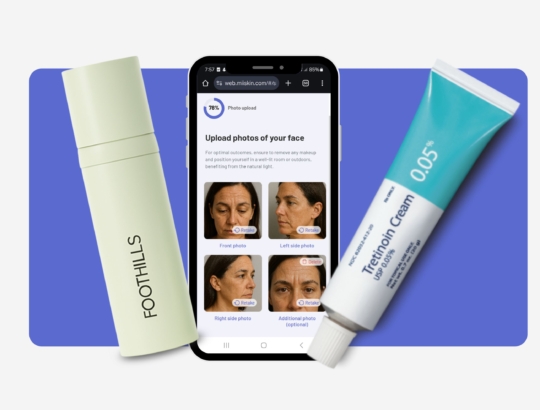
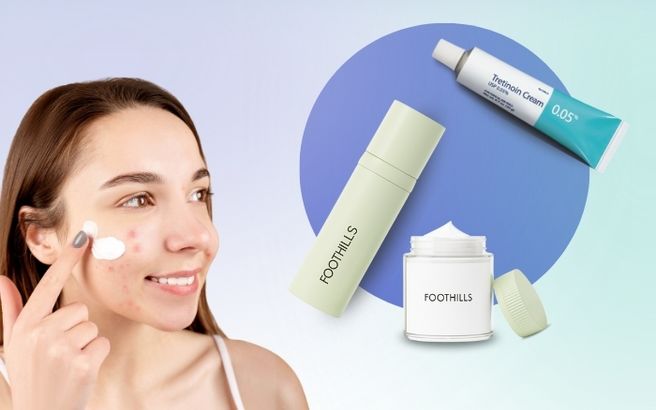
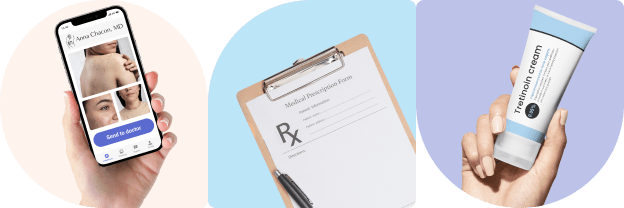

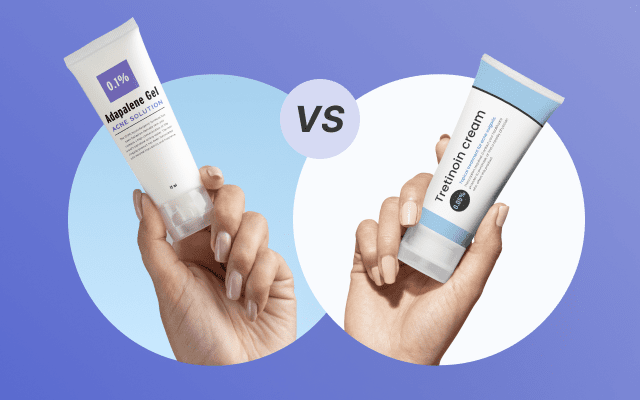
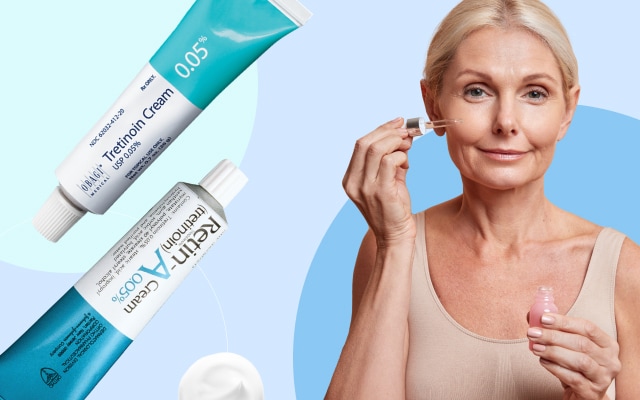
 Get a prescription for forehead wrinkles!
Get a prescription for forehead wrinkles!